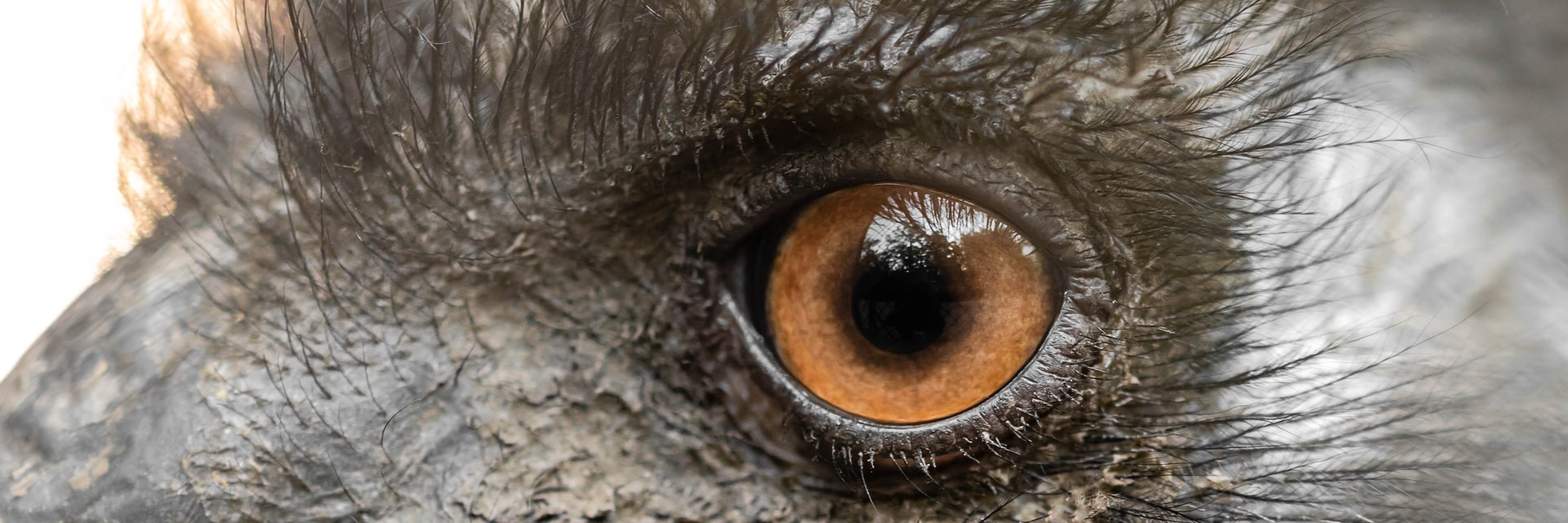Warbird
Arthur swelled with pride as he watched the 4th Battalion on parade, their crisp black uniforms even more impressive against the bright red feathers of their currently-unarmored Warbirds. Just two more years before he could join their ranks. Two more years before he could ride to the defense of Malay atop one of the fearsome avians.
He wove through the crowd for a better look, stumbling as he pushed his way through the front. The motion caught the eye of a particularly large Warbird, its long neck darting towards him at blinding speed. The bird's rider deftly brought it back into formation, but not before Arthur felt its razor teeth snag on the skin of his thumb.
He watched the bird march past in awe, his finger throbbing where it had pulled strips of skin clear from his flesh in neat, surgical lines. Two more years. Arthur could hardly wait.
Warbirds are aggressive birds with razor sharp teeth, rivaled only by their cousin, the arctic raptor. No longer found in the wild, they are a common addition to most Andovian mounted units where their quick reflexes and aggressive attacks make them a formidable foe, with or without their rider.Basic Information
Anatomy
Warbirds have two large, muscular legs, ending in large three-toed feet, well-adapted for impressively high speeds even when carrying a rider.
Their large, oval body is framed by an impressive pair of wings, mostly used to provide balance and additional speed while the avian is running but also capable of carrying their weight for short distances by flying slightly above the ground. This is a tactic rarely used by the bird since they typically carry a rider while hunting live prey, but it does allow them an advantage with balancing over rough terrain.
Half of the bird's height is in its neck, a flexible collection of spine and muscle which allows the predatory bird to strike quickly and ferociously at its prey. The layers of feathers along the neck are particularly thick and typically fluffed up with air as a defense mechanism against strikes from enemy Warbirds.
Dietary Needs and Habits
Arcturian Warbirds maintain their carnivorous wild nature, despite their domestication. In peacetime they feed on meat scraps provided by their riders, supplemented with any wild game they can catch. Dragonette and Squirrels remain a popular snack, due in large part to their high numbers and frequent intrusions into Warbird pens.
In battle Warbirds are permitted to feast on any meats they can claim, leading to frequent vicious bites against opposing forces. Arcturian armies bathe themselves in a repellant, teasingly named bird soup, to protect their own forces from an errant Warbird. The birds are trained from an early age to avoid biting anything coated in the mixture, as a bite could quickly become lethal once the birds' teeth fully sharpen during adolescence. Each city maintains their own mixture and jealously guards the preparation process. Particularly astute cities maintain several variations in case of theft.
Additional Information
Domestication
Warbirds were once a common sight upon the fields of the Andisol Valley. Today wild Warbirds are extinct, replaced by fully domesticated birdstock at every major city and military outpost across the Valley.
Assuming a Warbird could ever be considered domesticated, of course.
Warbirds are valued mounts in wartime, attacking any edible opposing forces near their rider with unsurpassed reflexes and razor teeth. The birds are trained to tolerate armor during battle, featuring lightweight combinations of leather and cloth across most of their bodies. All but the poorest cities add a plate crupper to defend the birds' flank, with a remarkably flexible metal crinet defending their long, vulnerable necks. Wealthier cities commonly weave Tyrellium into the cloth lining underneath the armor to defend against Battle Mages. Some military units have developed poisons or caustic to apply to the Warbirds' teeth and mouth prior to battle, taking great care to ensure the valuable birds themselves will remain immune to the effects.
Scientific Name
Gigantavia beakus
Conservation Status
Extinct in the Wild
Average Height
10 ft
Average Weight
250 - 400 lbs
Geographic Distribution
Related Ethnicities
Related Materials








I read this and I'm reminded of a quote about cats that state "Humans didn't domesticate cats, it was the other way around..." For some reason, I have much the same feeling here... only ...
:D Nice one, SolarCat! Keep 'em coming!Thank you! It feels good to be writing again, so glad you are enjoying. And I am glad I got the reel right with these guys. Haha.
Necromancy is a Wholesome Science.